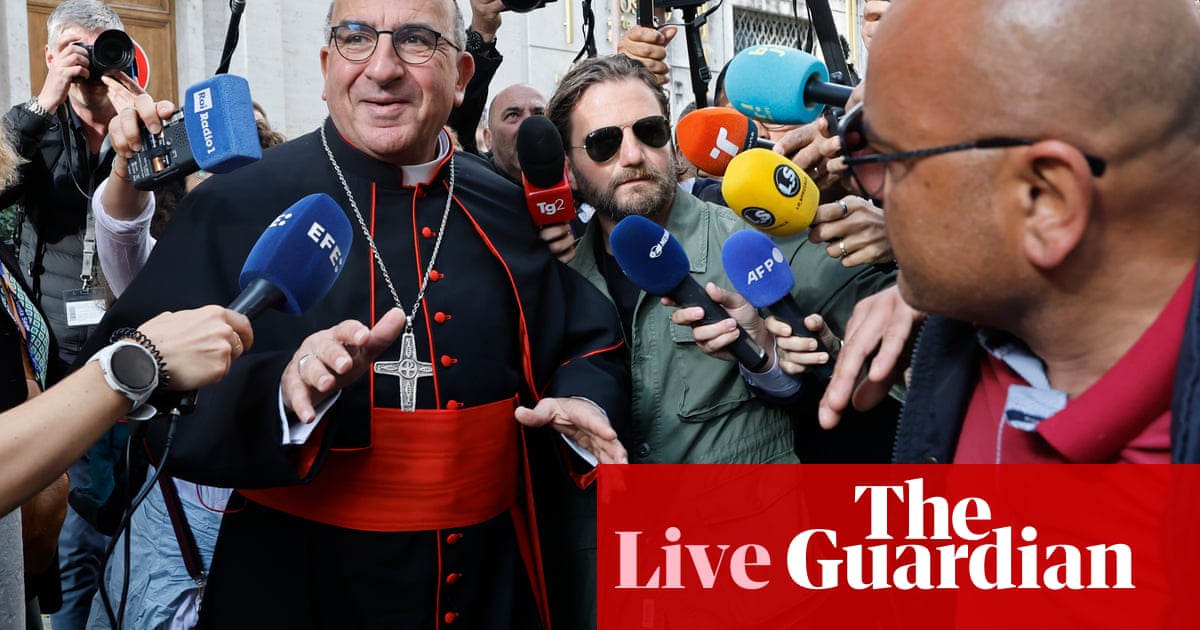The article presents an overview of the conclave process for electing a new pope, following the death of Pope Francis. It highlights the ceremonial aspects, the schedule for the day, and the significance of this event within the Catholic Church. The presentation of the information suggests a careful orchestration to engage a global audience, emphasizing the traditions and the historical importance of the conclave.
Purpose of the Article
The primary intention behind this news piece appears to be to inform the public about the conclave's proceedings and to generate interest in the historical and religious significance of electing a new pope. By detailing the schedule and rituals involved, the article aims to create a sense of anticipation and awareness among readers, particularly those interested in the Catholic Church and its global impact.
Public Perception
The article likely aims to foster a sense of reverence and curiosity regarding the election of the new pope. By focusing on the traditions and solemnity of the conclave, it may evoke emotions associated with faith and the continuity of leadership within the Church. The emphasis on secrecy and the historical significance of the process also adds an element of intrigue that can captivate the audience.
Hidden Agendas or Omissions
While the article focuses on the conclave, it might be avoiding deeper discussions about the challenges facing the Church or controversies surrounding its leadership. By concentrating on the ceremonial aspects, it may sidestep critical issues that could be relevant to the election process or the Church's future.
Manipulative Element Assessment
The article does not appear overtly manipulative; however, it utilizes language that exudes reverence and formality, which can influence public sentiment. The presentation of the conclave as a significant and traditional event could sway readers to view it with heightened importance, potentially overshadowing any criticisms of the Church or its candidates.
Factual Accuracy
The information seems reliable, as it provides a detailed schedule and description of the conclave process, which is well-documented in the history of the Catholic Church. However, the lack of diverse viewpoints or critiques could suggest a one-sided narrative.
Perceived Narrative
The narrative conveyed is one of tradition, solemnity, and anticipation. It portrays the conclave as a pivotal moment for the Catholic Church, emphasizing its historical continuity and the weight of the decisions being made.
Connections with Other News
This article may connect with broader themes in global news regarding leadership transitions, religious authority, and the role of faith in public life. The conclave's timing and global attention may align with other significant events in politics or religion, creating a narrative that highlights the intersections of faith and governance.
Impact on Society and Economy
The election of a new pope can have significant implications for global Catholic communities, influencing social policies, interfaith relations, and even political landscapes in predominantly Catholic countries. The conclave could also affect financial markets related to religious institutions or industries connected to faith-based tourism.
Audience Appeal
The article targets readers with an interest in religion, particularly those invested in the Catholic Church. It also appeals to individuals curious about historical and cultural traditions, as well as those who follow global news events closely.
Market Influence
The news surrounding the conclave may affect sectors tied to the Catholic Church, such as religious goods and services, tourism in Vatican City, and even financial markets linked to organizations influenced by Catholic teachings.
Global Power Dynamics
While the conclave itself may not have immediate implications for global power dynamics, the leadership chosen can influence the Church's stance on various international issues, potentially affecting diplomatic relations and humanitarian efforts.
AI Utilization Potential
It is plausible that AI could have been involved in drafting or editing this article to ensure clarity and engagement. Language models might assist in structuring the narrative, but the core information likely stems from established journalistic practices. Should AI be involved, it could subtly shape the tone and focus of the article to align with audience expectations.
Overall, the article serves as a reflection of the importance of the conclave while potentially glossing over more contentious issues within the Church. The portrayal is largely positive and reverent, positioning the event as a moment of hope and continuity for Catholic followers.
